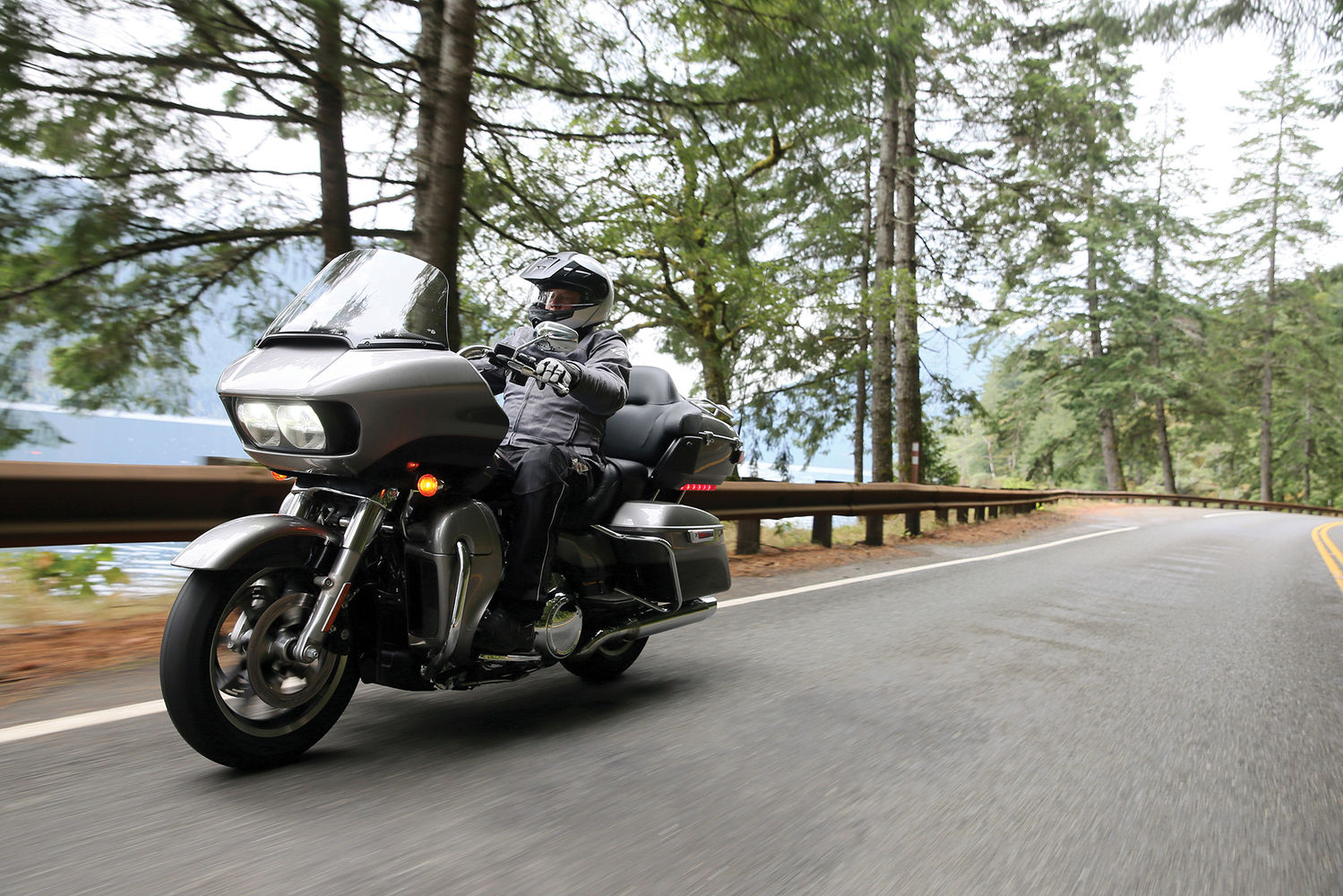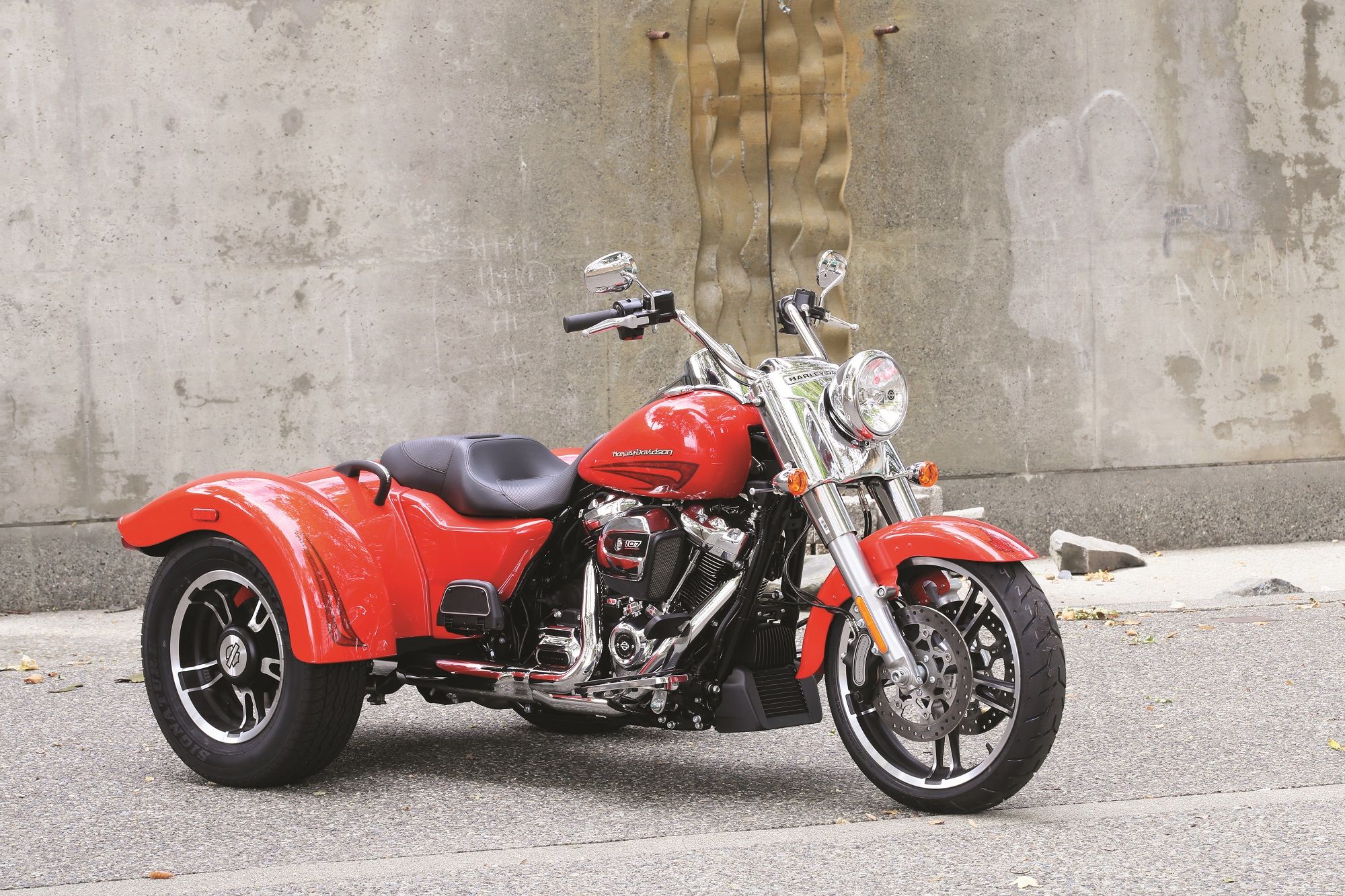2017 Harley-Davidson Touring Rollout: The Motor Company Does a Heart Transplant!

Harley’s Twin Cam engines have been around since the last century—heck, the last millennium—so it was time for a change.
Change has come in the form of a new powerplant dubbed the Milwaukee-Eight, for its eight valves (four per cylinder, up from the prior two) and, you guessed it, the historic location of the Motor Company’s headquarters. This new engine is the ninth Big Twin in Harley’s history and it walks the fine line between tradition and the modernity needed to retain existing customers while drawing in new ones. It will be used in all touring models, and although it’s not official yet, you’ll probably see it in all models powered by a Big Twin the following model year. In addition, the front and rear suspensions of 2017 touring models are substantially upgraded.
“These are the most powerful, most responsive, and most comfortable touring motorcycles ever offered by Harley-Davidson,” said Scott Miller, vice president of styling and product development strategy.

There are three iterations of the Milwaukee-Eight. There’s a 107-cubic-incher (1,750cc) with oil-cooled heads for Street Glide, Road Glide, Road King, Freewheeler, and Electra Glide Ultra Classic models. A Twin-Cooled 107 with water-cooled heads is used in the Ultra Limited, Road Glide Ultra, and Tri Glide Ultra models. Then, there’s a 114-incher (1,870cc) with water-cooled heads for the pricier CVO models. The CVO Pro Street Breakout is still powered by the Twin Cam 110B air-cooled engine.
The new engine’s overall shape, dimensions, and weight are close to the outgoing Twin Cam’s specs. The Milwaukee-Eight retains the classic 45-degree V-twin cylinder angle, and the basic profile of the engine is similar, so the average Joe probably won’t even notice the difference. Yet, look closer and you’ll find plenty of changes.
The non-water-cooled versions have an oil cooler that helps carry away heat after the lubricant is circulated through the heads. A single camshaft opens all the valves, as it was with the Evo engines, but rocker arms now deliver lift to each pair of intake and exhaust valves. Besides the four-valve per cylinder heads, there’s a counterbalancer used in all models of the Milwaukee-Eight, unlike the Twin Cam series, which only used one with the solid-mounted engines.

Throttle bodies are now 55mm in diameter, up from 50mm, for better breathing. A new knock (detonation) sensor takes over for the previous, less-sensitive ionization detection which helps prevent spark “knock” or pinging under load. Charging system output has increased from 17 amps at 1,050 rpm to more than 30 amps at the same speed. Clutch lever effort from the hydraulically actuated system has been further reduced from the Twin Cam series, with a new pressure plate design.
Alex Bozmoski, chief engineer of new product at Harley-Davidson, led the team that designed the new engine. One of the challenges was finding the right amount of vibration to please both die-hard traditionalists who think a Harley should vibrate strongly, and newcomers who prefer less vibration. Based on feedback from consumer clinics, they decided to set the counterbalancers to reduce idle vibration by 75 percent. During a presentation in Tacoma, WA, he told us that much time, effort, and money was expended in reducing the mechanical engine noises, so that the signature exhaust sound can be louder yet still stay within sound-limit regulations.
Torque is reported to be about 10 percent higher and is developed across a wider rpm band. The four-valve cylinder heads are said to offer a potential 50 percent more intake and exhaust flow capacity than previous year models. This makes it possible to provide Screamin’ Eagle hop-up kits which exploit some of this additional capacity to make even more power. Various stage kits that are said to deliver up to a 24-percent increase in torque over the stock engine are available.

The Motor Company doesn’t provide horsepower specifications, but I heard from a reliable source at Harley that it puts out about 85 horses and 110 pound feet in stock form at the rear wheel, which is a substantial gain. Fuel economy is claimed to be similar, or slightly better, despite the boost in output. A new heat management strategy also improves rider and passenger comfort in hot weather.
Suspension improvements are at both ends. New dual bending valve front suspension technology is designed to provide the performance of a cartridge fork, with linear damping characteristics and reduced weight. This replaces the conventional damper-rod legs found in previous models. New emulsion-technology rear shocks offer 15 to 30 percent more preload adjustment than previous standard touring shocks, with a single, hand-adjustable knob to hydraulically dial in preload. This replaces the air-adjustable rear shocks, which were often set wrong or not at all, and often leaked out over time.

Riding Impressions
Engine sound is similar, but slightly different to an experienced ear; still it retains the “potato-potato” sound Harley is famous for. The engine starts instantly and runs nearly flawlessly; the fuel injection is well dialed in. There’s plenty of torque and it seems to pull more strongly across the rpm span, without running out of breath at higher revs like previous models. Yet you can chuff down to two grand in sixth gear. Clutch work is noticeably easier and therefore shifting is easier. The new engine package seems better without busting tradition. Most riders will be happy with the power as it is, but those who crave more can buy Screamin’ Eagle kits.
Ride quality is improved, with far less wallowing over dips and less harshness when going over sharp-edge bumps in the road surface. This helps the big machines hold a line through corners, and makes riders and passengers happier as well.

Final Thoughts
The new Milwaukee-Eight delivers a riding experience that should please both traditional buyers and newcomers. Although changes for 2017 are limited mainly to engines and suspension, and some color schemes, they are actually big changes! Harley-Davidson sales have been sliding recently, in part due to competition from American rivals Indian and Victory, and competing models from imported brands. This new engine, along with chassis improvements, should help stem the losses, and may aid the Motor Company in attracting new customers.
